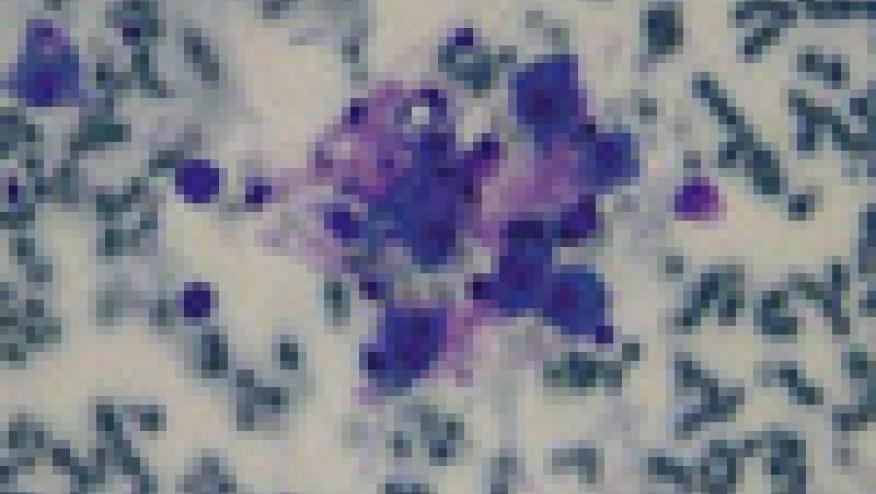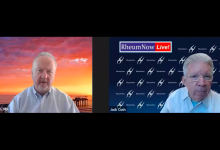Management of Hemophagocytic Lymphohistiocytosis (HLH) in Adults Save

Hemophagocytic lymphohistiocytosis (HLH) is a severe hyperinflammatory syndrome induced by activated macrophages and cytotoxic T cells. HLH manifests recurrent fever, cytopenia, liver dysfunction, and a sepsis-like syndrome that may complicated by multiple organ failure. While HLH is rarely genetic (primary) and seen in children; the more frequent secondary (acquired) form is seen adults. The journal Blood, has a review on the diagnosis and management of pediatric and adult patients with HLH.
Secondary HLH is commonly results from infections, malignancies and autoinflammatory/autoimmune disorders, amongst which systemic juvenile idiopathic arthritis (Still's disease) is the most common cause.
Macrophage activation syndrome (MAS; or MAS-HLH) is HLH arising in autoinflammatory/autoimmune disorders, amongst which systemic juvenile idiopathic arthritis (Still's disease) is the most common cause.
Criteria for HLH in children may not apply well to adult cases. Another challenge in HLH may be indistinguishable from sepsis or multiple organ dysfunction syndrome and may therefore complicate therapy. Thus, the call for these expert opinions derived from an interdisciplinary working group on adult HLH, sponsored by the Histiocyte Society.
Consensus statements from this paper include:
Pathogenesis and epidemiology of HLH
Statement 1: Primary and secondary HLH, including MAS-HLH, are hyperferritinemic hyperinflammatory syndromes with a common terminal pathway but with different pathogenetic roots (strong consensus).
Statement 2: HLH triggers, including occult malignancies, require a meticulous search for the underlying disease that should be continued, despite ongoing HLH treatment (strong consensus).
Diagnosis of HLH in adults
Statement 3: The diagnosis of HLH in adults should be based on the HLH-2004 diagnostic criteria in conjunction with clinical judgment and the patient’s history (strong consensus).
Statement 4: Diagnostic tests for genetic HLH include functional assessment of lymphocyte cytotoxicity and guided genetic testing. They are useful for detecting potential genetic predisposition to HLH in select patients, but pending results must not delay the clinical decision to treat HLH (consensus).
Statement 5: Lymphoma as a hidden trigger of HLH may be difficult to detect. Use of positron emission tomography–guided imaging, repetitive tissue sampling, and consultation with a lymphoma reference pathologist, are recommended (strong consensus).
Treatment of adult patients with HLH
Statement 6: HLH-94 treatment components, including etoposide, are highly effective in treating hyperinflammation in adults with HLH (Figure 1) (strong consensus).
Statement 7: The variable severity of HLH, including MAS-HLH, demands graded intensity and length of treatment. Treatment should be tailored to control hyperinflammation and to treat identified disease triggers (strong consensus).
Statement 8: Secondary infections are a major cause of fatality and may erroneously be diagnosed as HLH relapse (strong consensus).
Malignancy-triggered-HLH
Statement 9: Mal-HLH comes in 2 forms: “malignancy-triggered HLH” as a presenting feature of the malignancy at diagnosis or at relapse and “HLH during chemotherapy,” in most cases induced by infections. Differentiating these HLH subtypes is important, because the therapeutic approach differs markedly (strong consensus).
Infection-associated HLH
Statement 10: Viral infections, in particular EBV, HIV, cytomegalovirus, or influenza, are common triggers of HLH (strong consensus).
Statement 11: HLH induced by intracellular infections, such as tuberculosis, leishmaniasis, or rickettsial disease, usually does not need HLH-94–like treatment but responds to specific antimicrobial treatment (strong consensus).
Salvage treatment of relapsed and refractory HLH
Statement 12: Salvage treatment of adults with refractory/relapsing HLH usually requires intensification using combined chemotherapy and consolidation with alloSCT (strong consensus).
HLH and MAS-HLH in the intensive care unit
Statement 13: In critically ill patients with persistent fever, cytopenias, and organomegaly, particularly in confirmed or presumed cases of sepsis, sepsis-like syndromes, and/or evolving multiorgan failure, suspicion for HLH should be raised and further HLH testing should be initiated (strong consensus).
HLH-like cytokine storm induced by novel immunotherapies
Statement 15: Novel immunotherapies may induce a cytokine storm resembling HLH that requires specific treatment (strong consensus).










If you are a health practitioner, you may Login/Register to comment.
Due to the nature of these comment forums, only health practitioners are allowed to comment at this time.